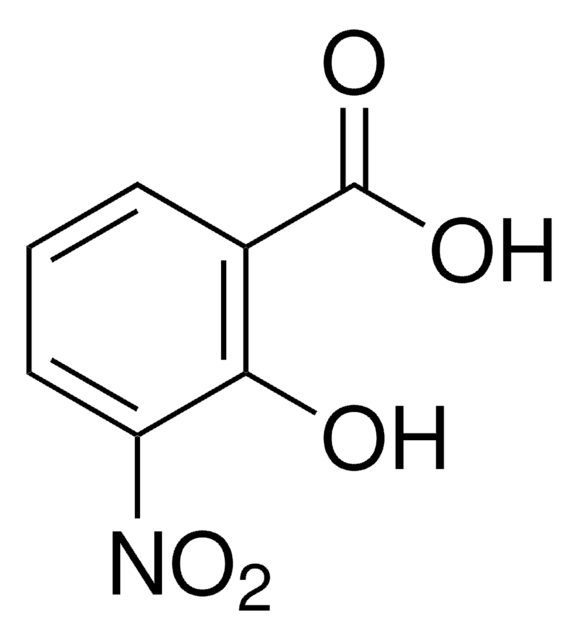135577
2-Chlorobenzoic acid
98%
Synonym(s):
2-CBA, o-Chlorobenzoic acid
About This Item
Recommended Products
Assay
98%
mp
138-140 °C (lit.)
solubility
cold water: soluble 900 part
alcohol: freely soluble
diethyl ether: freely soluble
water: soluble (hot)
SMILES string
OC(=O)c1ccccc1Cl
InChI
1S/C7H5ClO2/c8-6-4-2-1-3-5(6)7(9)10/h1-4H,(H,9,10)
InChI key
IKCLCGXPQILATA-UHFFFAOYSA-N
Looking for similar products? Visit Product Comparison Guide
General description
Application
Signal Word
Warning
Hazard Statements
Precautionary Statements
Hazard Classifications
Eye Irrit. 2 - Skin Irrit. 2
Storage Class Code
13 - Non Combustible Solids
WGK
WGK 2
Flash Point(F)
343.4 °F
Flash Point(C)
173 °C
Personal Protective Equipment
Certificates of Analysis (COA)
Search for Certificates of Analysis (COA) by entering the products Lot/Batch Number. Lot and Batch Numbers can be found on a product’s label following the words ‘Lot’ or ‘Batch’.
Already Own This Product?
Find documentation for the products that you have recently purchased in the Document Library.
Our team of scientists has experience in all areas of research including Life Science, Material Science, Chemical Synthesis, Chromatography, Analytical and many others.
Contact Technical Service









